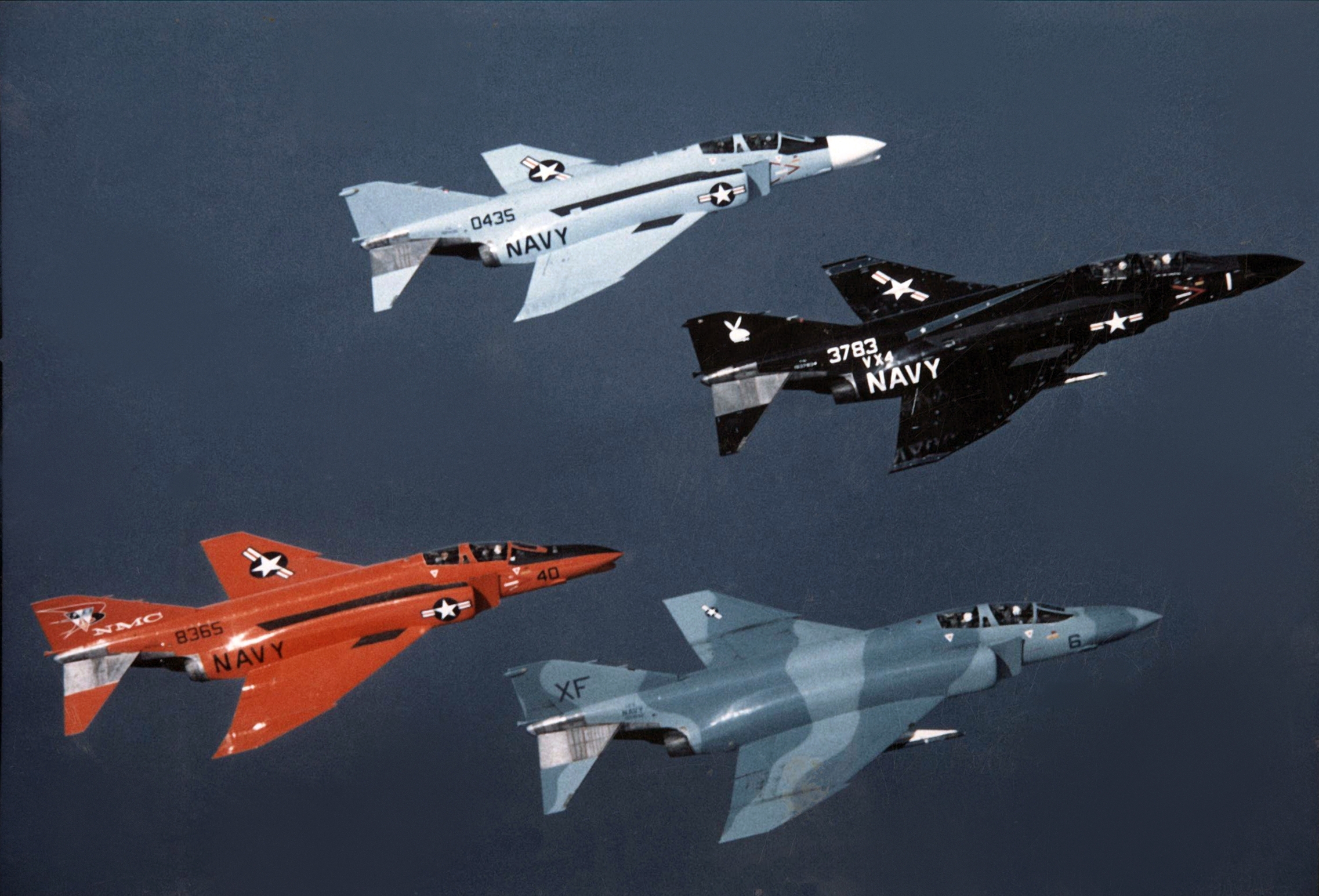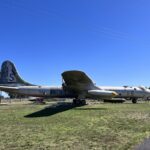by Adam Estes
After a multi-year fundraising operation, and the cooperation of the Pima Air & Space Museum in Tucson, Arizona, a unique example of the McDonnell-Douglas Phantom II arrived at the Castle Air Museum in Atwater, California. This being F-4S BuNo.155539, the last example of the breed to have flown with Air Test and Evaluation Squadron Four (VX-4), better known as “The Evaluators.”
Manufactured in St. Louis, Missouri, as an F-4J-33-MD, construction number 2777, Bureau Number 155539 would make its first flight on February 22, 1968, before being assigned by the US Navy to VF-102 aboard USS America (CV-66). 155539 would also be operated by VF-102 on shore at NAS Oceana, Virginia. After serving aboard USS Independence (CV-62) and a brief assignment to NAS Fallon, Nevada, 155539 was transferred to VF-101 in May of 1975, flying out of Oceana and MCAS Cherry Point, North Carolina before being reassigned to VF-33 at NAS Oceana before taking another assignment onboard USS Independence. 155539 would also serve on USS Dwight D. Eisenhower (CVN-69), Roosevelt Roads Naval Station in Puerto Rico, and once again on USS America. Its final assignment with VF-33 was at NAS Oceana before the aircraft was sent to NAS North Island, California, to be converted from an F-4J to an F-4S at the Naval aircraft Rework/Refit Facility, which saw the addition of smokeless engines, reinforcements to the airframe, and leading-edge slats for maneuverability. In May of 1981, 155539 was transferred to VX-4 (Air Test and Evaluation Squadron Four, (AIRTEVRON FOUR)), known as the Evaluators, based at NAS Point Mugu, California.
Its original modex XF-8 was changed to XF-1 in 1982, giving it the now-famous callsign Vandy 1, along with a distinctive, all-black livery. To complement the all-black paint scheme, VX-4 personnel painted a Playboy Bunny on the tails of their Phantoms, albeit without asking permission from Hugh Hefner, who owned the trademarked symbol. The media mogul initially considered taking legal action for this breach but gave way to common sense and granted permission to use his Bunny emblem.
VX-4 used BuNo.155539 to evaluate advanced systems for future use on aircraft deployed within the fleet. The Phantom also took part in several air shows, where its distinctive markings earned it a nickname with the public, Black Bunny.
As newer jets, such as the F-14 Tomcat and F/A-18 Hornet, joined the US Navy, the service began phasing out the venerable Phantom II, both from carrier-based squadrons and evaluation units as well. This eventually saw F-14 Tomcats taking on the Black Bunny moniker and Vandy 1 callsign with VX-4. On May 2nd, 1986, BuNo.155539 made its last flight, transiting from Point Mugu to the Aerospace Maintenance and Regeneration Center (AMARC, now the 309th Aerospace Maintenance and Regeneration Group) at Davis-Monthan Air Force Base in Tucson, Arizona.
And there the iconic jet would remain under the hot desert sun for the next 36 years. As time passed, and so many of the Phantom IIs stored at AMARG fell to the scrapper’s bulldozer, BuNo.155539 became the sole intact example with a VX-4 pedigree, although the forward fuselage of another Black Bunny F-4S, BuNo.153783, is stored in Lancashire, England. [The latter artifact survived due to its post-US Navy service with Britain’s Royal Air Force as F-4J(UK) ZE352.]
Although the aircraft featured in the Boneyard’s Celebrity Row, the longer it remained at AMARG, the greater the chances that it too would be cut up for scrap. Fortunately, in 2016, the Castle Air Museum stepped in to save the Black Bunny. Little by little, donations from across the country came in, contributing to the effort to raise the necessary US$50,000 fee to move BuNo.155539 from the Boneyard to Atwater. While several subassemblies from the jet began were transported to Castle, the airframe itself still required a nearby facility for safe storage until it could finally make its way to the museum. Luckily, the Pima Air & Space Museum sits just across the street from the Boneyard and had ample room to assist the Castle Air Museum in saving the iconic jet. In late January 2022, Black Bunny moved to Pima’s outdoor storage lot, within sight of the museum’s display areas and adjacent to their restoration facilities. Pima has performed a similar service for other museums, temporarily storing aircraft on site after they leave the 309th AMARG for eventual preservation and display elsewhere.
Having raised sufficient funds to facilitate BuNo.155539’s move, Castle Air Museum contracted MKB Farms (using Worldwide Aircraft Recovery’s trailer) to perform the task. With the exception of the aircraft’s foldable wingtips, the entire airframe was loaded onto Worldwide’s big rig for the long journey west. It left Tucson during the night of Monday, July 24th, arriving at its first stop, near the banks of the Colorado River, in Parker, Arizona.
They drove into California the next day, sailing speedily along from Parker, through Palm Springs, San Bernardino, and Victorville before closing the day outside Tehachapi. Wednesday would see the Black Bunny roll through Bakersfield to reach Interstate 5 and loop back to Modesto for the final stretch to the museum, where they arrived during the morning of July 28th. Now that BuNo.155539 has arrived, museum staff will move the jet into their restoration hangar to undergo preparation for static display. Once the airframe is ready, it will become one of the finest and most unusual Phantom IIs on display anywhere!
A constant fundraising effort is required to maintain Castle Air Museum and its aircraft. Their important mission is only achievable due to the generosity of people like you – so please click HERE to give them support!




































